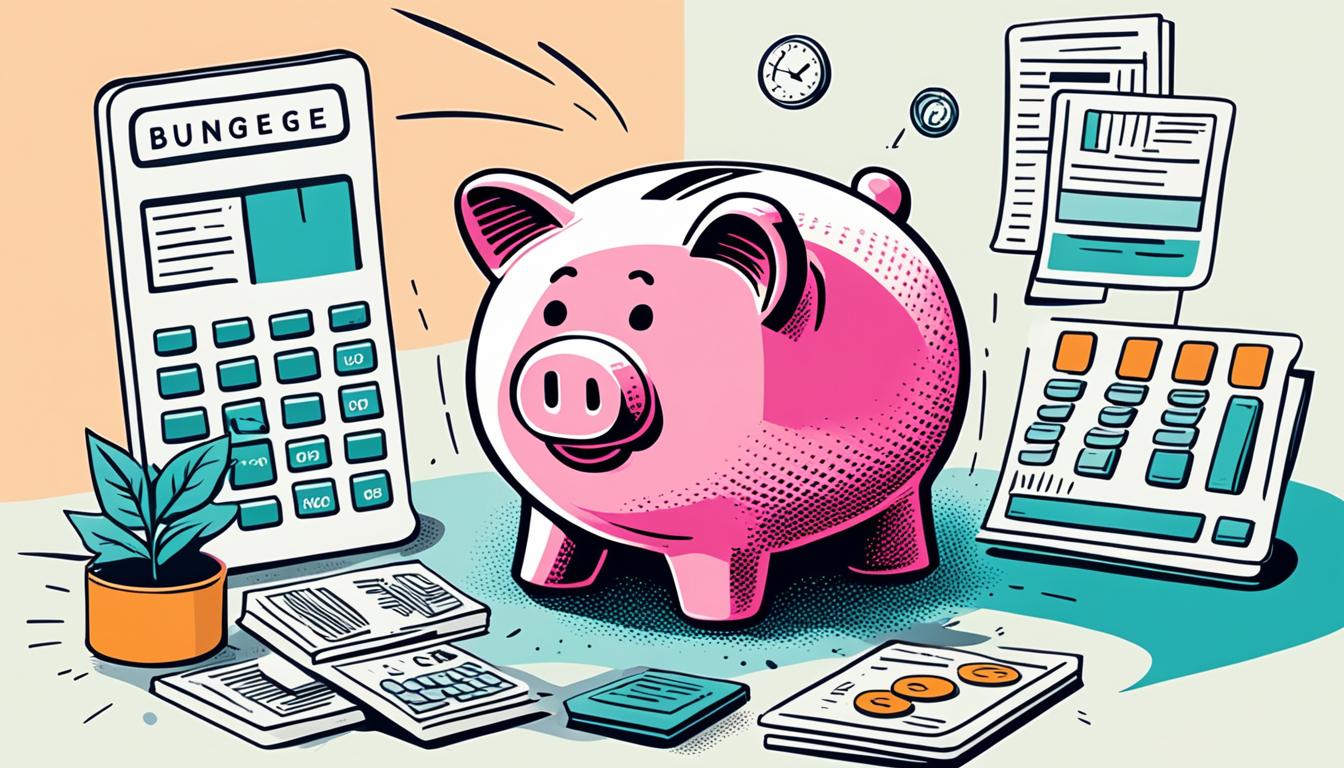To prioritize essentials over nice-to-haves, first identify your core needs based on your values, goals, and responsibilities. Focus on spending time and resources on items and experiences that support your long-term growth, like housing, healthcare, and education. Cut back on non-essential expenses that don’t align with your priorities, and learn to recognize impulse triggers that lead to unnecessary purchases. Stay mindful of your goals; more tips to help you make smarter choices are just ahead.
Key Takeaways
- Categorize expenses and needs as essential (must-have) or non-essential (nice-to-have).
- Prioritize essentials that directly support your core goals and responsibilities.
- Use clear criteria and questions to evaluate if a want aligns with your long-term objectives.
- Limit discretionary spending on non-essentials to maintain financial stability and focus.
- Regularly review and adjust priorities to ensure essentials are met before indulging in nice-to-have items.
Defining Your Core Needs and Desires

Understanding what truly matters to you is the first step in prioritizing your needs and desires. Take time to reflect on what you value most in life—whether it’s health, relationships, career growth, or personal growth. Identify your non-negotiables, the essentials you need daily or regularly to feel fulfilled and secure. Recognize your desires—things that bring joy or comfort but aren’t critical. Be honest with yourself about what genuinely impacts your well-being and happiness. Write these down to clarify your core needs and desires. This self-awareness helps you make better decisions, ensuring your resources—time, money, and energy—are directed toward what truly matters. Prioritization plays a key role in how you manage your daily life, guiding you to focus on what aligns with your core values. Clear priorities allow you to distinguish essentials from nice-to-haves effectively. Incorporating vetted products and routines aligned with your core needs can further support your well-being. Additionally, considering an understanding of performance upgrades can help you focus on activities that promote development and growth for children or yourself.
Recognizing the Impact of Impulse Purchases

You might find yourself making impulse purchases when certain triggers, like stress or tempting displays, catch you off guard. These urges can add up quickly, impacting your budget and financial goals. Recognizing what prompts these urges helps you make smarter choices and stay focused on your priorities. Being aware of cookie categories and how they influence your online experience can also help you understand the subtle ways your browsing behavior is shaped. For example, understanding nutritional content can motivate healthier choices and reduce unnecessary spending. Additionally, understanding investment diversification can further support your efforts to prioritize essential financial goals over impulsive spending. Recognizing the importance of mindfulness techniques can help you become more aware of your spending habits and resist impulsive urges. Exploring privacy settings can empower you to control how your data influences your online interactions, further supporting conscious decision-making.
Impulse Buying Triggers
Impulse buying can often be triggered by subtle cues in the environment, such as eye-catching displays or limited-time offers, which catch your attention unexpectedly. These triggers tap into your emotions and impulse control, making it harder to resist purchase urges. Recognizing these cues helps you stay mindful when shopping. For example, attractive packaging or store layout can prompt unplanned buys. To better understand common triggers, consider this table:
| Trigger Type | Example |
|---|---|
| Visual displays | Bright, colorful signs |
| Time-limited offers | Flash sales, countdown timers |
| Price reductions | Discount tags |
| Placement strategies | Items at checkout counters |
| Sensory cues | Scents or sounds in stores |
Being aware of these triggers allows you to pause and evaluate whether a purchase aligns with your priorities. Additionally, understanding gear shifting techniques can help you better manage your cycling habits and maintain safety on your rides. Recognizing the influence of cost behavior analysis can also empower you to make more informed financial decisions and avoid unnecessary expenses. Developing awareness of decision fatigue can further help you resist impulse buys when overwhelmed or tired. Practicing mindfulness during shopping can help you recognize emotional triggers that often lead to unplanned purchases and enable you to pause before acting on them.
Financial Consequences of Urges
Uncontrolled urges to buy can quickly drain your finances, often leading to regret and financial strain. When you give in to impulse purchases, you spend money on items you don’t need, which adds up over time. These spontaneous expenses can disrupt your budget, making it harder to save for essentials or future goals. The immediate gratification may feel good, but the long-term costs can be significant. You might find yourself constantly battling debt or living paycheck to paycheck. Recognizing the impact of these urges helps you make smarter choices. By slowing down and evaluating whether an item is a necessity or just a fleeting desire, you protect your financial stability and avoid unnecessary stress. Managing urges is vital for maintaining a healthy, balanced financial life.
Assessing Long-Term Benefits Versus Short-Term Gratification

Balancing long-term benefits against short-term gratification requires careful evaluation of immediate rewards versus future gains. You need to ask yourself whether the quick satisfaction from an impulsive choice outweighs the lasting advantages of a more considered decision. Short-term pleasures can feel tempting, but they often distract you from your bigger goals. To make wise choices, pause and consider the potential outcomes. Will this action help you build sustainable progress or just provide fleeting happiness? Prioritizing long-term benefits might mean delaying gratification now, but it pays off later. Recognizing the difference between what feels good now and what benefits you in the future helps you stay focused on your true priorities. Making this distinction is key to achieving meaningful, lasting success. Exploring techniques like mindfulness practices can help reinforce your focus on what truly matters over immediate satisfaction. Practicing meditation techniques can cultivate patience and clarity, supporting your ability to prioritize long-term goals over short-term temptations. Participating in internal company hackathons can also cultivate a mindset geared toward innovation and sustainable growth, emphasizing long-term value over short-term wins. Additionally, implementing regular organization reviews can help ensure your actions align with your long-term aspirations and prevent impulsive decisions from derailing your progress. Incorporating self-awareness exercises can further deepen your understanding of your motivations and reinforce your commitment to your long-term objectives.
Setting Clear Priorities Based on Your Goals

To set clear priorities, start by defining your goals precisely; knowing what you want helps you focus. Next, evaluate your essential needs first to make certain you’re addressing what truly matters. Finally, strike a balance between your wants and priorities to make informed decisions that align with your overall objectives.
Define Your Goals Clearly
Have you ever felt overwhelmed by too many options when trying to decide what’s most important? To cut through the noise, you need to define your goals clearly. Know exactly what you want to achieve, whether it’s saving for a big purchase, improving your health, or advancing your career. When your goals are specific and well-articulated, it becomes easier to prioritize what truly matters. Write them down and make sure they’re realistic and measurable. This clarity helps you distinguish between essentials and nice-to-haves, guiding your decisions. Being aware of the variety of water parks available can help you choose destinations that best align with your priorities. Without clear goals, you risk wasting time and resources on things that don’t align with your bigger picture. Define your goals now, and use that clarity to shape your priorities effectively. Incorporating content relevance and authority into your planning ensures your efforts support your long-term objectives.
Evaluate Essential Needs First
How do you determine which needs come first when your goals are clear? Start by listing all your needs and categorizing them as essential or non-essential. Focus on what directly impacts your goals or core responsibilities. Ask yourself: which needs are non-negotiable for progress? Prioritize those that address your immediate requirements, like basic resources, safety, or fundamental tools. Avoid getting sidetracked by wants that can wait. Consider deadlines and consequences—what happens if you delay? By evaluating each need against your goals, you’ll identify which essentials demand your attention first. This approach ensures your efforts are aligned with achieving your objectives efficiently, preventing you from wasting time or resources on less critical items.
Balance Wants and Priorities
While it’s important to identify your essential needs, balancing wants and priorities guarantees you stay aligned with your goals. You need to recognize what truly moves you forward and what’s just a fleeting desire. By doing so, you can focus your energy on what matters most, avoiding distractions that derail progress. Ask yourself:
- What aligns with my long-term vision?
- Which desires support my growth and well-being?
- What compromises will help me stay motivated without losing sight of my goals?
Prioritizing these questions keeps you grounded. When your wants support your core objectives, you create a powerful path forward. Balance isn’t about denying pleasures; it’s about ensuring your choices serve your bigger purpose, fueling your journey with clarity and confidence.
Differentiating Between Essential Expenses and Optional Spending

Understanding the difference between essential expenses and optional spending is crucial for managing your finances effectively. Essential expenses are costs you must cover to maintain basic living standards, like rent, utilities, groceries, and healthcare. These are non-negotiable and keep your daily life stable. Optional spending includes non-essential items or services, such as dining out, entertainment, or luxury purchases. While it’s okay to indulge occasionally, these expenses can be reduced or postponed if your finances are tight. By clearly identifying what’s essential and what’s optional, you can prioritize your money wisely. This awareness helps you avoid unnecessary debt and ensures you’re prepared for unexpected costs. Staying disciplined with your spending ensures your financial foundation remains strong, giving you more control and peace of mind.
Strategies for Budgeting and Resource Allocation

Effective budgeting starts with setting clear financial goals and tracking your income and expenses regularly. When you know exactly where your money goes, it’s easier to make intentional choices. To allocate resources wisely, consider these strategies:
- Prioritize essentials first, ensuring your basic needs are covered before spending on non-essentials.
- Create a flexible budget that adapts to unexpected expenses without sacrificing your goals.
- Use the 50/30/20 rule as a guide to balance your spending, saving, and investing, giving you peace of mind and control.
The Role of Values and Personal Principles in Decision-Making

Your personal values and principles serve as a guiding compass when making financial decisions, helping you prioritize what truly matters. They influence whether you focus on essential needs or indulge in nice-to-haves. When you align your choices with core beliefs, you make more intentional decisions, avoiding impulse buys and fleeting trends. To clarify your values, consider this table:
| Core Values | Decision Impact |
|---|---|
| Security | Prioritize savings over luxury expenses |
| Sustainability | Choose eco-friendly options over cheap alternatives |
| Simplicity | Avoid unnecessary gadgets or trendy items |
| Responsibility | Budget for essentials before splurging |
| Growth | Invest in education or skills over fleeting trends |
Techniques for Avoiding Distractions From Fads and Trends

Fads and trends can easily distract you from your long-term financial goals, tempting you to make impulsive purchases. To stay focused, try these techniques:
- Pause and Reflect: Before buying, ask yourself if it aligns with your priorities or if it’s just a passing craze.
- Limit Exposure: Unfollow trend-focused social media accounts or unsubscribe from marketing emails that fuel FOMO.
- Stick to a Budget: Allocate funds for essentials first, and view trend-related purchases as optional extras.
These steps help you resist the allure of fleeting fads and keep your financial path clear. By maintaining discipline, you preserve your resources for what truly matters, avoiding regret and unnecessary debt.
When to Reevaluate Your Priorities and Adjust Accordingly

Reevaluating your priorities is essential whenever significant life changes occur, such as a new job, a move, or a major health event. These moments often shift your perspective and resource availability, making it necessary to adjust your focus. Recognize when your current priorities no longer serve your goals or well-being. Regular check-ins help you stay aligned with what truly matters. Use this table to identify signs it’s time to reassess:
| Indicator | Example | Action |
|---|---|---|
| Feeling overwhelmed | Tasks pile up without progress | Reevaluate and prioritize |
| Goals no longer relevant | Shift in career or health | Adjust your priorities |
| Lack of motivation | Tasks feel meaningless | Reconsider essentials |
| New opportunities | Unexpected chances arise | Reassess and adapt |
Stay attentive to these signals to keep your priorities clear and effective.
Building a Mindset Focused on Sustainability and Contentment

Shifting your mindset toward sustainability and contentment means focusing on what truly matters rather than constantly chasing after more. It requires embracing gratitude for what you already have and recognizing that happiness doesn’t come from possessions. To cultivate this mindset, consider these steps:
- Appreciate simple pleasures—find joy in everyday moments instead of material things.
- Set meaningful goals—prioritize experiences and relationships over accumulation.
- Practice mindful consumption—choose quality over quantity and reduce waste.
Frequently Asked Questions
How Can I Identify Truly Essential Items From Trendy Fads?
When figuring out if an item is truly essential or just trendy, ask yourself if it solves a real problem or adds lasting value to your life. Consider if you’ll use it regularly or if it’s likely to go out of style quickly. Trust your instincts and do some research—look for reviews or expert opinions. If it’s practical, timeless, and suits your needs, it’s probably essential.
What Criteria Help Distinguish Between Necessary and Optional Expenses?
When deciding what to spend on, consider if the expense meets a fundamental need or improves your well-being. Ask yourself if it’s something you’ll use regularly or if it’s just a passing trend. Focus on items that offer long-term value and align with your financial goals. If it’s optional and not urgent, it’s probably a nice-to-have. Prioritizing these criteria helps you distinguish essential expenses from optional ones.
How Do Personal Values Influence Prioritization Decisions?
Think of your personal values as a compass guiding your choices. They influence how you decide what matters most, shaping your priorities like a lighthouse in a storm. When making financial decisions, you naturally focus on expenses that align with your core beliefs—whether it’s supporting your family or investing in your passions. Your values help you cut through clutter, ensuring your spending reflects what truly matters to you.
What Are Effective Methods for Resisting Impulse Buying?
When resisting impulse buying, you should set clear limits beforehand, like a budget or a list of essentials. Practice pausing before making a purchase—wait 24 hours to see if you still want it. Avoid tempting situations, like browsing online stores when you’re bored. Focus on your long-term goals and values, which can help you prioritize what truly matters over fleeting desires. This keeps your spending aligned with your priorities.
How Often Should I Reassess My Spending Priorities?
You should reevaluate your spending priorities at least once every three to six months. This allows you to stay aligned with your financial goals and adapt to any changes in your income or expenses. Regular reviews help you identify unnecessary purchases and guarantee your money goes toward what truly matters. Make it a habit to assess your budget periodically, especially after big life events or financial shifts.
Conclusion
Think of your priorities as a garden. When you focus on planting essential seeds—your core needs—you cultivate lasting growth. Ignoring fleeting weeds—momentary whims—keeps your garden thriving. Regularly tending your plot guarantees you stay aligned with your values and goals. By prioritizing what truly matters, you create a lush, sustainable space of contentment and fulfillment. Remember, a well-tended garden flourishes when you nurture what’s essential, not just what’s trendy.









